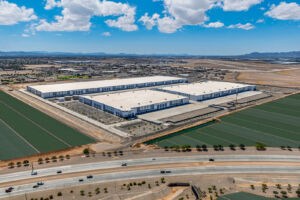As the end of the year nears, now is the time for commercial real estate investors to take advantage of the 179 deduction, reinvest in capital equipment to offset expenses and save on taxes.
 Helping commercial real estate investors and small business clients decide on what they should and shouldn’t do to lower their tax liability before the end of the year is Mike Maroney, mentor accountant at eeCPA, a Scottsdale-based small business accounting firm founded in 2004, providing full-service accounting and tax law consultation to small businesses and entrepreneurs with a focus on industries including technology, law, cannabis, wine & beer, commercial real estate and professional service industries.
Helping commercial real estate investors and small business clients decide on what they should and shouldn’t do to lower their tax liability before the end of the year is Mike Maroney, mentor accountant at eeCPA, a Scottsdale-based small business accounting firm founded in 2004, providing full-service accounting and tax law consultation to small businesses and entrepreneurs with a focus on industries including technology, law, cannabis, wine & beer, commercial real estate and professional service industries.
To get a better grasp on how to save this tax season, AZRE asked Maroney these questions.
AZRE: It’s October and the new year is right around the corner. Is there still time for commercial real estate investors to save on taxes?
Mike Maroney: Yes, year-end tax planning is always a hot topic around this time of year. Any opportunity to decrease your tax liability while improving your business productivity is always a great investment. A few hot areas on tax savings include the section 179 deduction, which has recently become a permanent deduction that is capped out at $500,000. Investors may wish to employ this tax saving strategy in combination with special bonus depreciation.
AZRE: What should investors know about the 179 deduction and what is the easiest way to take advantage of it?
MM: Section 179 is intended for business owners to invest additional capital in the company while allowing them to deduct the whole cost of the purchase. It is a way to fully depreciate an item in the current year rather than over the lifespan of the purchase. Along with the section 179 deduction is the additional bonus depreciation for property. The bonus depreciation deduction of 50 percent has been extended through 2017 with a phase out to 40 percent in 2018. Bonus depreciation is allowed for certain qualifying properties. To qualify, the property must be new (not used) and the property must have a life of 20 years or less. Qualified leasehold improvements are also eligible for bonus depreciation. This could make it a win for a landlord in a lease negotiation.
AZRE: What are some misunderstandings investors should be aware of when having a 179 purchase in mind? Are there limits on certain purchases?
MM: If your company has a net loss at the end of the year, you are not eligible to take the 179 deduction. Some equipment and improvements that do not qualify are air conditioning units, heating equipment, pools, paved parking areas and fences. When deciding on purchasing a new company vehicle there can be limits depending on the weight of the vehicle and the type of the vehicle. For typical passenger vehicles that are at least 50-percent business use and are under 6,000 pounds, the depreciation limit is $11,060 for cars and $11,160 for vans. For vehicles over 6,000 pounds the depreciation limit is $25,000 for SUV’s and could be higher if a commercial van or heavy-duty truck.
AZRE: What other types of purchases can investors take advantage of before the year ends?
MM: The most common section 179 purchases are: equipment purchased for business, tangible property, business vehicles (weight limits could apply), computers, software, office furniture or equipment, qualified leasehold improvements and restaurant and retail building improvements.
AZRE: What should investors know about qualified leasehold improvements and what qualifies for the section 179 deduction?
MM: Investors need to keep in mind that while they are taking advantage of the additional depreciation expense and section 179 expense, when it’s time to sell the building they will be responsible for the depreciation recapture that will be treated as ordinary income. Qualified leasehold improvements are any improvement to an interior portion of the building that are subject to depreciation. A few examples of qualified improvements are plumbing, ventilation, lighting and electrical, fire protection and alarm systems and structural components that benefit the tenant area.



